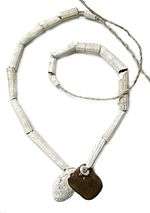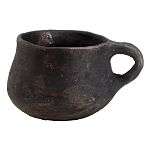Polada culture
The Polada culture (22nd to 16th centuries BC) is the name for a culture of the ancient Bronze Age which spread primarily in the territory of modern-day Lombardy, Veneto and Trentino, characterized by settlements on pile-dwellings.
The name derives from the same locality in the territory of Lonato del Garda in Lombardy where the first findings attributed to this culture were discovered in the years between 1870 and 1875 as a result of intense activities of reclamation in a peat bog; the dating of carbon-14 on the finds place them between c. 1380 BC and c. 1270 BC.[1] Other major sites are found in the area between Mantua, the Lake Garda and the Lake of Pusiano.
It was succeeded in the Middle Bronze Age by the facies of the pile dwellings and of the dammed settlements.

Origin
There are some commonalities with the previous Bell Beaker Culture including the usage of the bow and a certain mastery in metallurgy.[2] According to Barfield the appearance of Polada facies is connected to the movement of populations from southern Germany and from Switzerland.
Diffusion
Most of the sites attributable to this culture were discovered around the Lake Garda, between eastern Lombardy, Trentino and western Veneto and around the Lago di Viverone and the Lake Maggiore in Piedmont.
Its influences are also found in the cultures of the Early Bronze Age of Liguria, Romagna,[3] Corsica[4] and Sardinia (Bonnanaro culture).
Settlements

The settlements in the area of lakes and marshes of Moraine are stilt houses resting on "drainage" [5] of horizontal trunks, arranged in layered platform or cassette. They had a relatively limited extension, about a hectare, and a population between 200 and 300 people per village.

Economy
The economy was based on breeding, hunting, farming, fishing and large-scale berry harvesting.
In a site of this culture, near Solferino, was found the oldest example of domesticated horse in Italy.[6]
Material Culture
If the pottery is still coarse, other human activities grow and develop: lithic industry, in bone and horn, wood and metals. The Bronze tools and weapons show similarities with those of the Unetice Culture and other groups in the north of Alps including the Singen and Straubing groups.

Notes
- ↑ Coles & Harding (1979: 202)
- ↑ An Early History of Horsemanship pg.129
- ↑ Anna Maria Bietti Sestieri, Protostoria
- ↑ Françoise Lorenzi, Les influences italiques dans la céramique de l'Age du Bronze de la Corse.
- ↑ A "drainage" is a stilt house built on the bank of a lake or a river, on a scaffolding resting on the ground with logs fixed into the silt to consolidate (see image on the site Tragol.it), different from a real suspended stilt house, built on scaffolding suspended above the water.
- ↑ An Early History of Horsemanship pg.129
See also
| Wikimedia Commons has media related to Polada culture. |
Further reading
- Anna Maria Bietti Sestieri, L'Italia nell'età del bronzo e del ferro : dalle palafitte a Romolo (2200-700 a.C.). with CD-ROM. Rome: Carocci. 2010. ISBN 9788843052073.
- L. Barfield, Northern Italy Before Rome. London, Thames and Hudson, 1971
- B. Barich, "Il complesso industriale della stazione di Polada alla luce dei più recenti dati", Bollettino di Paleotnologia Italiana, 80, 22 (1971): 77-182.
- John M. Coles, A. F. Harding, The Bronze Age in Europe: an introduction to the prehistory of Europe, c. 2000-700 BC, Taylor & Francis, 1979 - ISBN 0-416-70650-9
- L. Fasani, "L'età del Bronzo", in Veneto nell'antichità, Preistoria e Protostoria, Verona 1984.
- R. Peroni, L'età del bronzo nella penisola italiana I. L'antica età del bronzo, Florence, Olschki, 1971